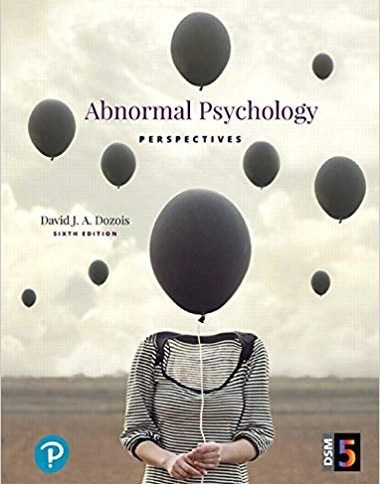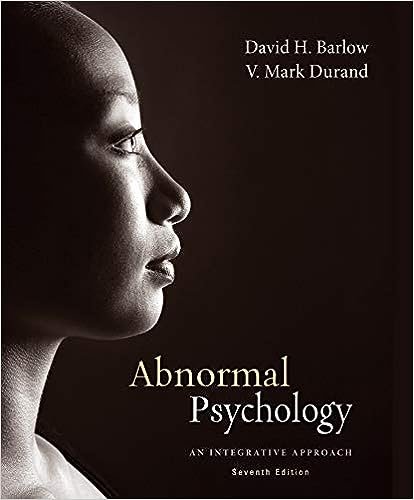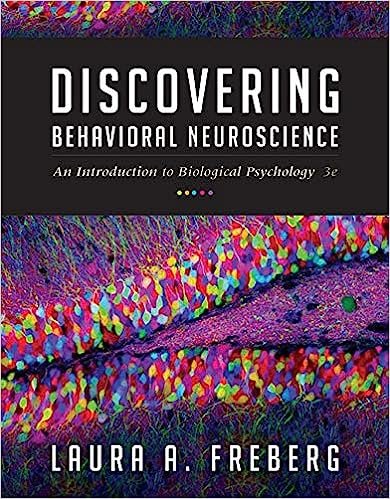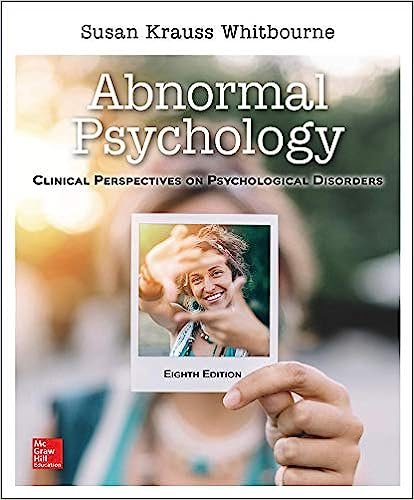Test Bank for Abnormal Psychology Perspectives 6th Edition David J.A. Dozois
Chapter 05: Anxiety, Obsessive-Compulsive, and Trauma -Related Disorders
Chapter 05 Multiple Choice Questions
- Anxiety is distinguished from fear and panic because of the emphasis on __________.
- A) fighting
- B) the present
- C) the past
- D) the future
- E) fleeing
Difficulty: 1
QuestionID: 05-1-01
Page-Reference: 96
Skill: Conceptual
Answer: D) the future
- Panic is defined as an extreme __________ reaction that is triggered by a(n) __________.
- A) anxiety; future-oriented threat
- B) emotional; perceived threat
- C) fear; false alarm
- D) anxiety; false alarm
- E) emotional; imagined threat
Difficulty: 2
QuestionID: 05-1-02
Page-Reference: 96
Skill: Conceptual
Answer: C) fear; false alarm
- References to anxiety have been made since __________, with the first references being made by _____ about __________.
- A) Victorian era; Freud; a woman who feared men with cigars
- B) the Middle Ages; Paracelsus; people who feared possession
- C) the 18th century; Pinel; a patient with apparent agoraphobia
- D) late 1800s; Kraepelin; a patient with apparent OCD-related disorder
- E) beginning of history; Hippocrates; a man who feared flute music
Difficulty: 2
QuestionID: 05-1-03
Page-Reference: 96
Skill: Factual
Answer: E) beginning of history; Hippocrates; a man who feared flute music
- According to the text, biological theories of anxiety emphasize all of the following except
- A)
- B) structural brain damage.
- C) family history.
- D)
- E)
Difficulty: 1
QuestionID: 05-1-04
Page-Reference: 97
Skill: Conceptual
Answer: B) structural brain damage.
- The neural circuit in fear / anxiety is believed to involve (from input to output):
- A) sensory systems; frontal cortex; adrenal cortex; brain stem / spinal cord
- B) sensory systems; thalamus; amygdala; hypothalamus; midbrain; brain stem / spinal
- C) thalamus; hippocampus; basal ganglia; hypothalamus; brain stem / spinal
- D) thalamus; occipital cortex; association cortex; motor cortex; brain stem/spinal
- E) thalamus; temporal cortex; association cortex; motor cortex; brain stem / spinal
Difficulty: 3
QuestionID: 05-1-05
Page-Reference: 97
Skill: Factual
Answer: B) sensory systems; thalamus; amygdala; hypothalamus; midbrain; brain stem / spinal
- With regard to neurotransmitters involved in fear / anxiety
- A) serotonergic circuits are primarily involved.
- B) dopamine agonists increase the fear / anxiety response in animals.
- C) the roles of GABA, norepinephrine and serotonin are the most studied.
- D) Only GABA has been well studied but others are thought to be involved.
- E) GABA’s function in the brain is processing threat-related stimuli.
Difficulty: 3
QuestionID: 05-1-06
Page-Reference: 98
Skill: Factual
Answer: C) the roles of GABA, norepinephrine and serotonin are the most studied.
- The role of GABA in anxiety was discovered after it was found that a class of drugs known as __________ reduce anxiety through their action on GABA.
- A) tricyclics
- B) benzodiazepines
- C) SSRIs
- D) bicyclics
- E) monoamine oxidase inhibitors
Difficulty: 1
QuestionID: 05-1-07
Page-Reference: 98
Skill: Factual
Answer: B) benzodiazepines











Reviews
There are no reviews yet.